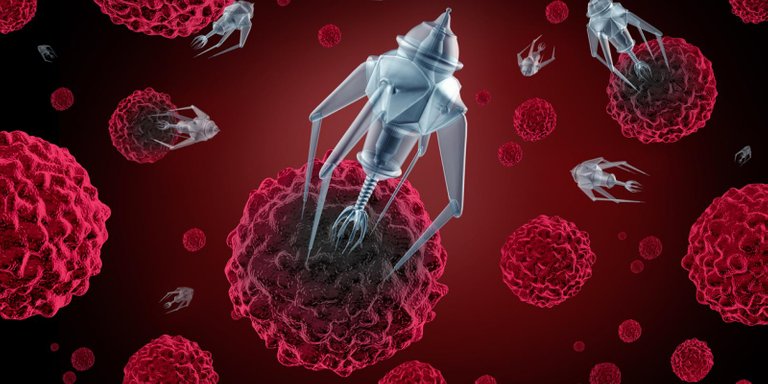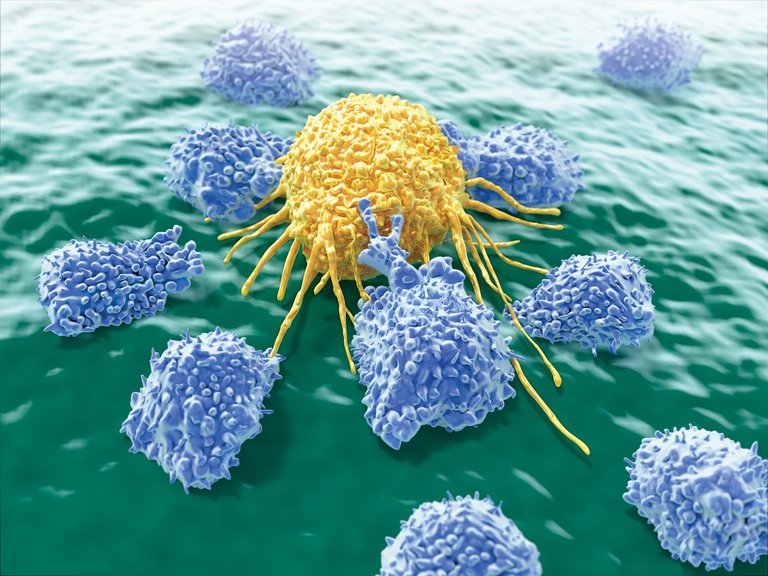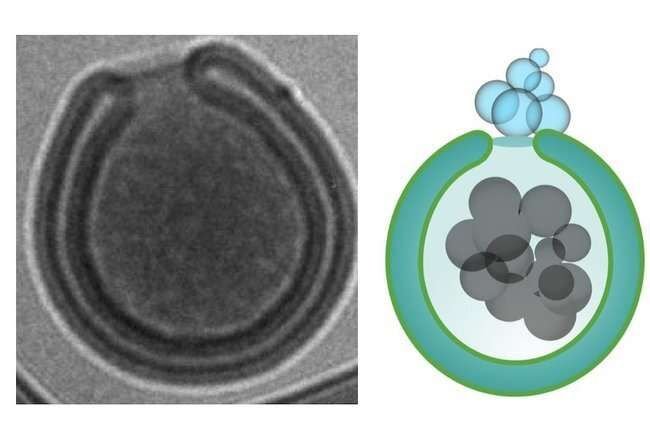
Source
Typically science fiction authors and some sensational media portray nanorrobots as Asimov-style spaceship-like metal structures in "Fantastic Voyage".
But soon after we think about it, we realize that it is totally impossible, not only because it would be unthinkable to manufacture these types of machines with a size of 100 nanometers (billionths of a meter), but they must also be biocompatible and biodegradable.
If these machines are not compatible with our body, the same immune system would kill them as if they were a virus or any other pathogen.

Source
In reality these nanorrobots are devices made up of molecules that can move in a biological medium, converting chemical energy into kinetic energy or movement.
If we consider that a viscous biological fluid such as blood, for a device of that size is equivalent to navigating a submarine in a sea of jam, imagine the relative power that these nanomotors must have.
The latest development of a team of scientists from the University of Eindhoven, consists of a hybrid engine formed by a hollow organic capsule that houses the fuel that these scientists have synthesized inside and works as a propellant.

Source
The propellant with which these hollow structures are charged is formed from manganese dioxide, which, in the presence of hydrogen peroxide, reacts by releasing micro-bubbles of oxygen that cause the structure to move.
One of the most immediate applications of these devices is to selectively deliver drugs, driving these nanorobots into the affected tissue and releasing their drug load onto it.
And letting the imagination run wild, they could boost the immune system, detect and destroy cancer when they are just a handful of seditious cells, who knows.


Versión en español

I believe that will be possible one day with more knowledge.
This is closer than we thought.
Hello @mauromar, the truth is that these inventions seem to be very promising, what I think is the cost that should involve their manufacture and also be able to have everyone access to them once it is ready to use. I imagine that with time and mass production that cost problem could be overcome.
But I think it's a wonderful thing, actually, to use the bubbles generated by the hydrogen peroxide to allow it to move, very creatively...
This post has been manually curated by @bala41288 from Indiaunited community. Join us on our Discord Server.
Do you know that you can earn a passive income by delegating to @indiaunited. We share 80 % of the curation rewards with the delegators.
Here are some handy links for delegations: 100HP, 250HP, 500HP, 1000HP.
Read our latest announcement post to get more information.
Please contribute to the community by upvoting this comment and posts made by @indiaunited.
I believe that everything that has to do with technology focused on medicine is very important and this invention would help many people, would be very useful and would collaborate in the reduction of many pathologies. Pathologies that until now seem to have no cure, such as cancer and diabetes mellitus. It would be great!
It's only a matter of time (I hope not very much)
Yes, I wish!